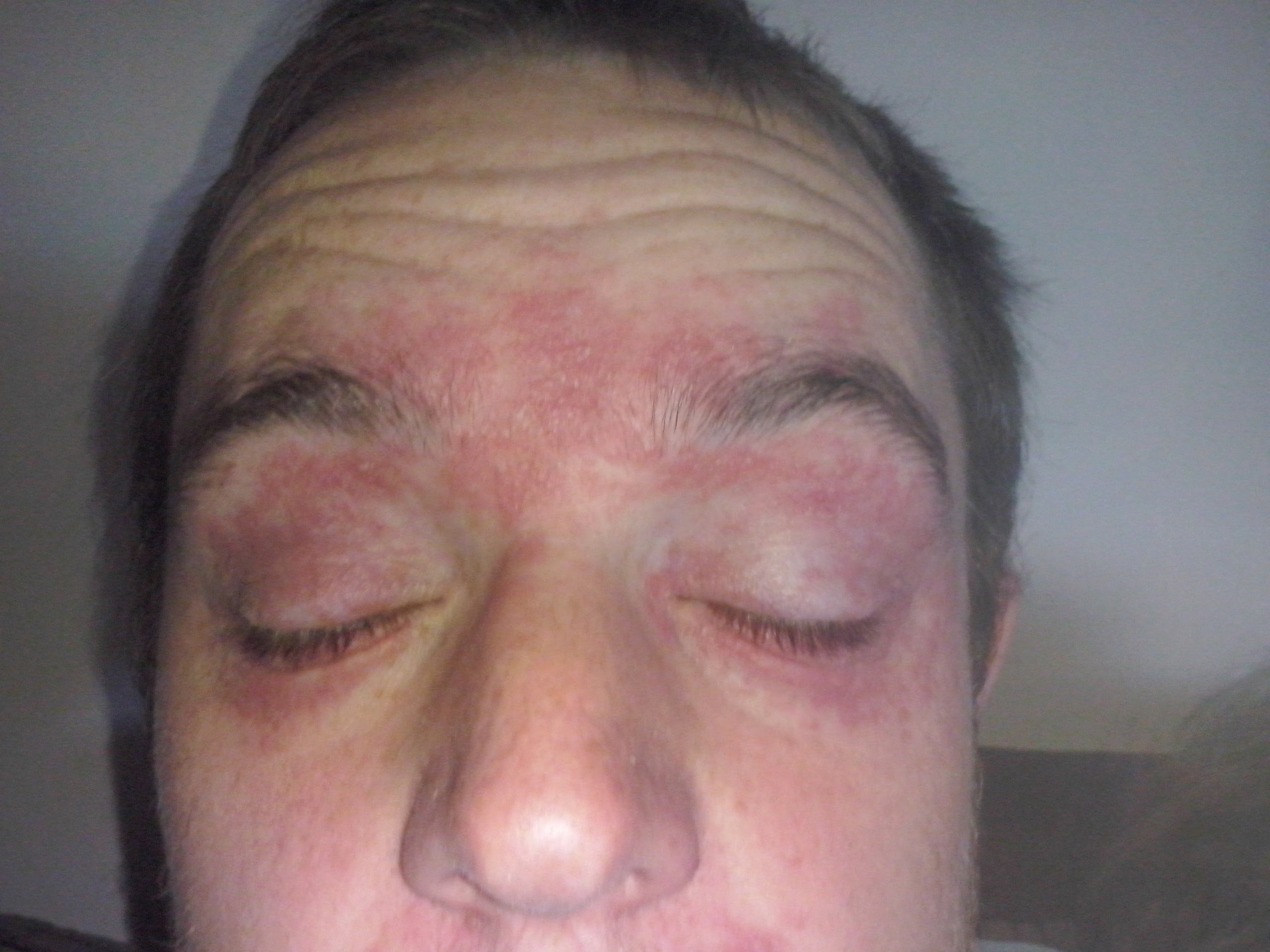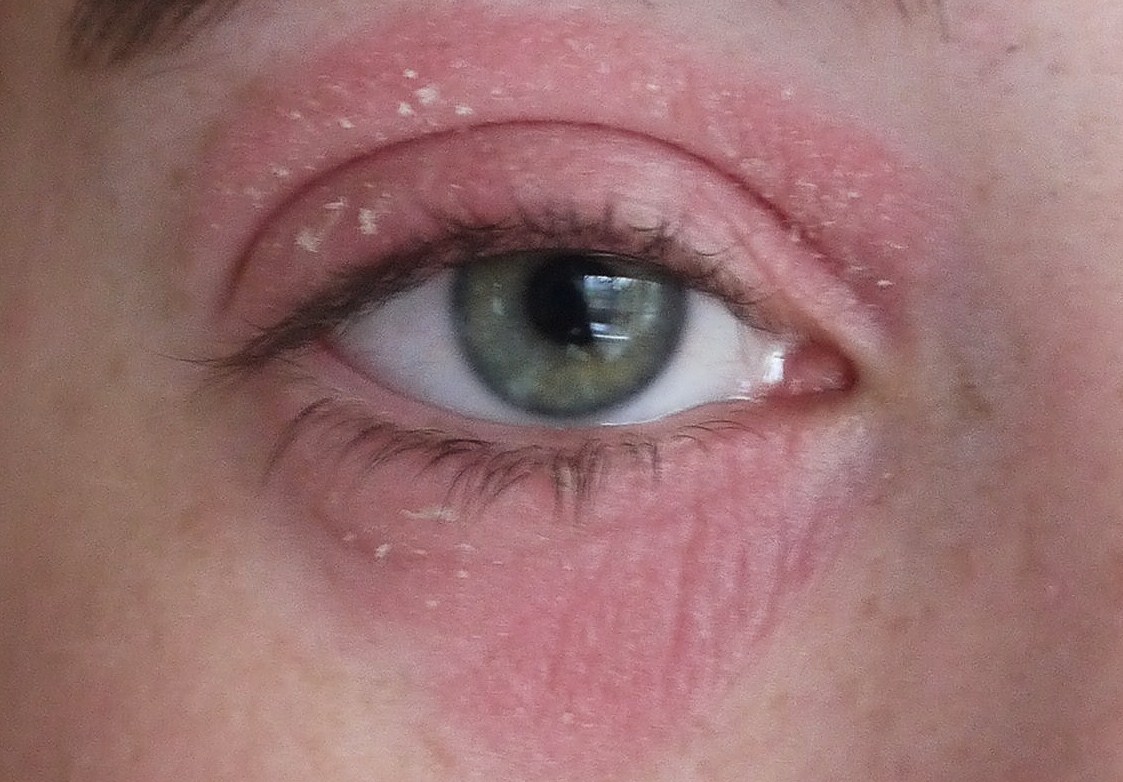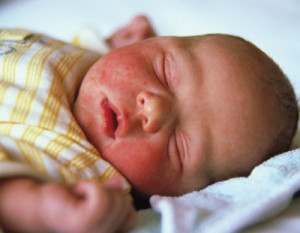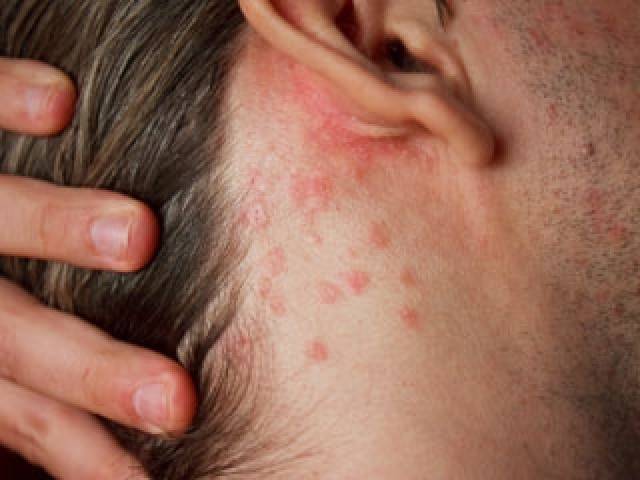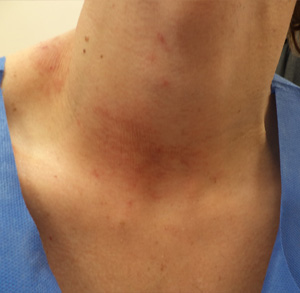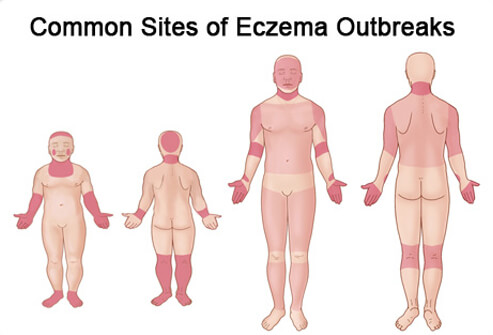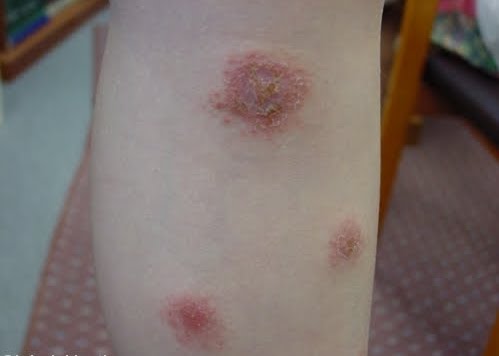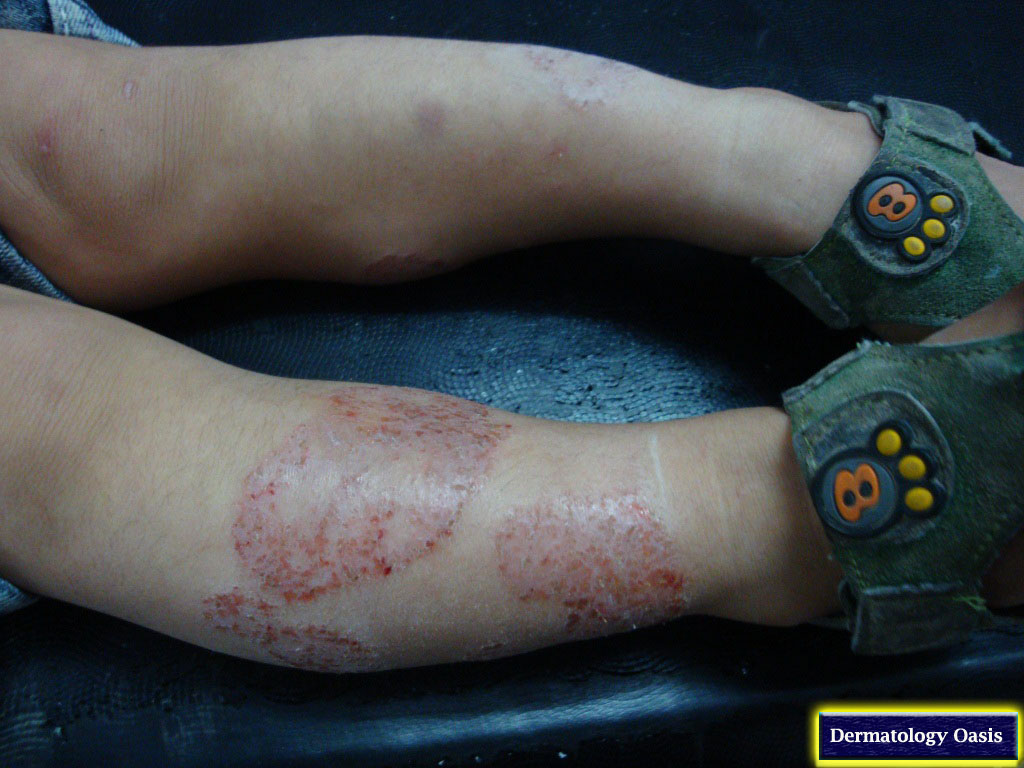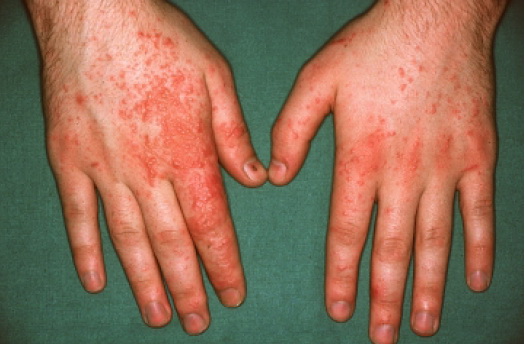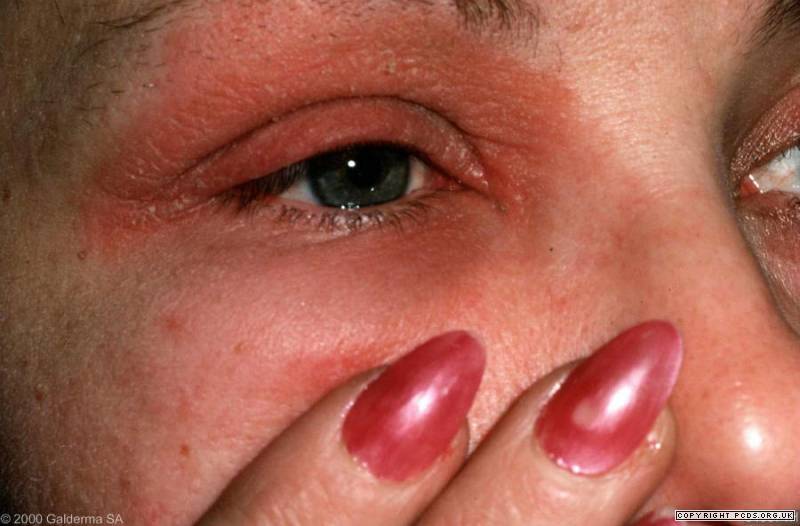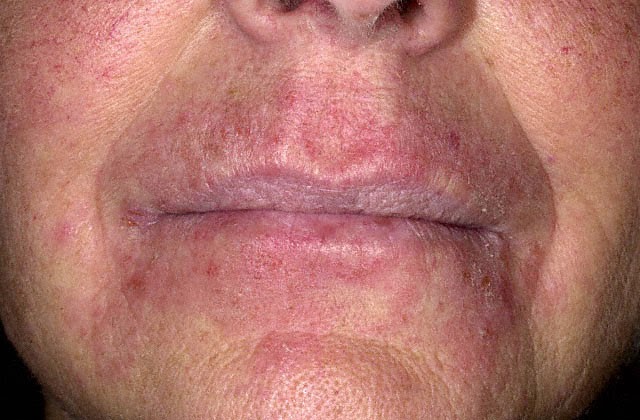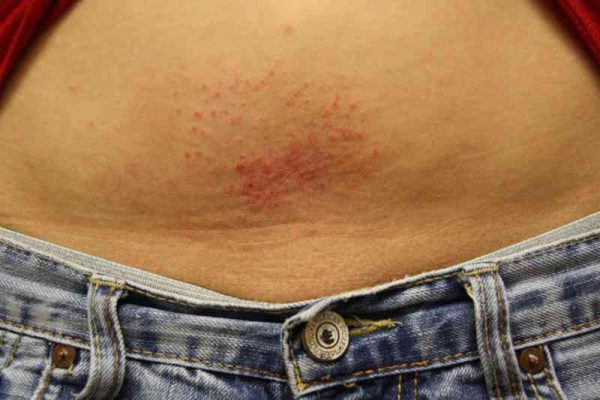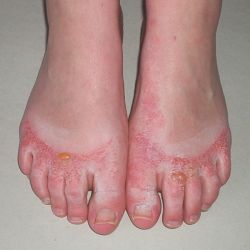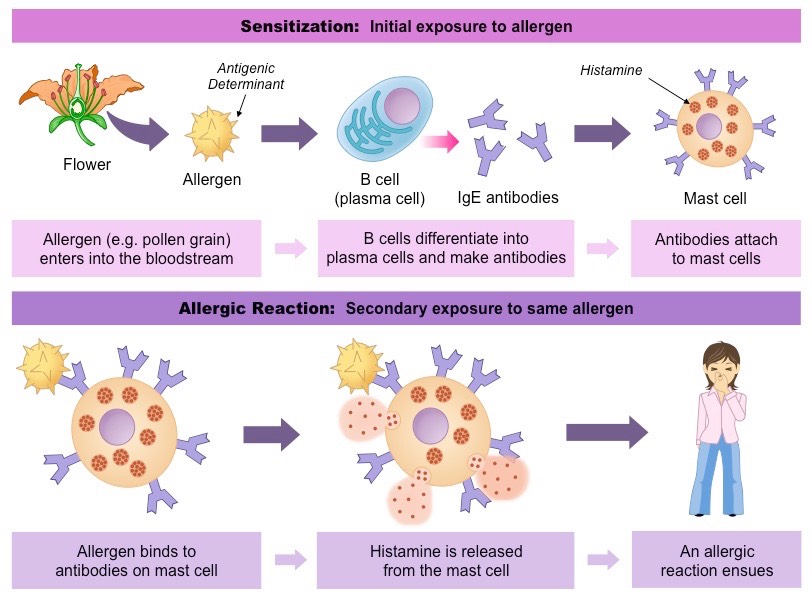Atopic Eczema
- It is a long term condition with no cure, when the skin’s waterproof barrier is weakened and as a result one gets dry, itchy and inflamed skin.
- It can cause ‘flare-ups’ particularly during allergy hay fever season and patients who are asthmatics.
- It mainly occurs at a young age and (in most cases) generally decreases with age.
DRY SKIN
- Like atopic eczema except it can occur any age.
Discoid eczema
- It is a condition that mainly affects males (ages 50- 70 years) or females in their teens to 20 years old.
- The cause is unknown and the main symptoms are circular patches on the skin.
- It can cause ‘flare-ups’ and one can have patches get worst or calm down and reappear in different areas (mainly on lower legs , forearm and trunk) or in the same area and is often confused with urticaria.
- It may be linked to atopic eczema and is also often confused with ringworm.
- It should be noted that ringworm tends to be few in number where as discoid eczema can be more in number and in multiple areas.
Allergic and irritant contact dermatitis
- This eczema occurs if one is exposed to an irritant or if anyone is allergic to anything. It can occur at anytime in one’s life.
- This eczema occurs if one is exposed to an irritant or if anyone is allergic to anything. It can occur at anytime in one’s life.
- The rash usually appears 48–72 hours after exposure.
- Certain allergens may penetrate intact skin poorly, and the onset of dermatitis may be delayed up to 1 week after exposure.
- A minimum of 10 days is required for individuals to develop specific sensitivity to a new contact.
- The immediate onset of dermatitis after initial exposure to material suggests either a cross-sensitisation reaction, prior forgotten exposure to the substance, or nonspecific irritant contact dermatitis provoked by the agent in question.
- Immediate reactions (i.e. visible lesions developing < 30 minutes after exposure) indicate contact urticaria and not allergic contact dermatitis.
- This is particularly true if the lesions are urticarial in appearance and if the skin reaction is associated with other symptoms, such as distant urticaria, wheezing, periorbital oedema (puffy eyes and/or swelling round eyes), runny nose , or anaphylaxis.
Medscape
All types of eczema conditions are increasing and are caused by a variety of triggers that include:
Allergies and irritants
(Allergy reactions can still develop even coming in contact with products for years or if have a one off contact) examples include:
- Soaps, detergent, dyes.
- Metals, nickel and cobalt in jewellery.
- Chromate in cement, textiles, adhesives.
- Cosmetics (hair dye preservatives, nail vanish remover).
- Rubber including latex.
- Plants: pollen, daffodils, tulips.
- Circulating allergens caused by air conditioned room.
Pets and animals
- Fur
Food
- Food intolerance
- Food allergies
Female Hormonal disorder:
- Period pains
- Hot flushes
- Menopause
- Ectopic Pregnancy
- Pelvic inflammatory disease
- Endometriosis
- Fibroids
- Polycystic ovaries
- Ovarian disease
- Ovarian cancer
- Cervical disease
- Cervical cancer
- Vaginal prolapsed
- Pregnancy
Other hormonal:
- Puberty
Ageing skin
- As one gets older we have less active oil producing glands.
Social/Psychological Factors
- Stress
- Panic attacks
- Alcohol can make one dehydrated
- Smoking can cause skin damage
Diet
- Poor diet does not give right nutrients to the skin
- Not drinking enough water
Seasonal
- Worse in winter Central heating is used more, entering from cold and harsh weather to warm areas and vice versa.
- Some find UV rays from the sun more harmful especially in summer.
Exercise
- Sweating a lot and working in sweaty environments.
- The skin exposed to wet and dampness leading to the skin being red and sore or exposed to water especially if hard,
chalky or heavy
chlorinated e.g. swimming pools.
UV rays and sun beds
Family history (not discoid eczema)
Standard of living
- Dust mites thrive in dusty areas
- Dust
- Poor ventilated areas
Rough and/or layers of clothing
- Clothes can irritate the skin
- Layers of clothes cause the skin one to sweat a lot and trap moisture and heat.
Excessive water contact
- Too much water can reduce oil protective layer on the skin and decrease the water proof barrier.
- One should be less than 20 minutes when having a shower or bath.
Diseases
- Asthma
- Hayfever
- Cushing syndrome
- Cystic fibrosis
- Dehydration conditions
- Diabetes
- Hyperthyroidism
- Ichthyosis
- Kidney disorders
- Long term diarrhoea
- Lupus
- Metabolic acidosis
- Parasite infections
- Phaeochromocytoma
- Psoriasis
- Sweat a lot
- Threadworm
- Ulcerative colitis
Medication
- One can be allergic or sensitive to medication
- Medication cause skin reactions
- Medications alter hormone balance
- Medication makes you lose water causing skin dehydration.
Assessment tools used by Healthcare professionals
Why let a GP receptionist decide on whether you should go to Pharmacy, or see a Medical Doctor?
- They are not medically trained
- Let them get on with the job they are supposed to do.
Let Medtick help to do that (it is developed by trained experts).
Advanced medical services related to the ‘minor ailment’ condition
If you wish to go to the Infection Service or Aftercare Service please select one of the tabs below:
Infection Service
- This section is regarding if one has an infection or not
- Check an infection by answering ‘yes or no approach’ to identify infections
- An additional information tool available to explain further medical conditions, symptoms and feelings
- This tool has a ‘save’ function and can be retrieved at a later time
- Presented as a report in a percentage format
Aftercare Service
- The Aftercare Service is an optional service where one can answer questions related to their symptoms, which could be a more serious underlying condition (not an infection or any physical injury).
- For example if one had pain in their wrist, it may not be a simple sprain but a form of arthritis.
- This site does not include body, skin or nail Infection conditions and/or diseases, please see ‘The Infection Service’ section for those conditions.
- Check “Refer to Dr symptoms” by answering ‘yes or no approach’ to identify diseases
- An additional information tool available to explain further medical conditions, symptoms and feelings
- This tool has a ‘save’ function and can be retrieved at a later time
- Presented as a report in a percentage format
Rash Aftercare Service
- The ‘Rash Aftercare Service’ is an optional service where we try to identify a non-infection rash if one believes it is not a minor ailment rash.
- For example one may think they have eczema when it could be skin cancer.
- This site does not include body, skin or nail Infection conditions and/or diseases, please see ‘The Infection Service’ section for those conditions.
- Check a rash by answering ‘yes or no approach’ to identify rashes
- An additional information tool available to explain further medical conditions, symptoms and feelings
- This tool has a ‘save’ function and can be retrieved at a later time.
- It is then presented as a report in a percentage format.
Nail Aftercare Service
- The ‘Nail Aftercare Service’ is an optional service where we try to identify underlying nail conditions and how it may be related to other medical conditions.
- For example one may think they have eczema when it is could be skin cancer.
- This site does not include body, skin or nail Infection conditions and/or diseases, please see ‘The Infection Service’ section for those conditions.
- Check one’s nail by answering ‘yes or no approach’ to identify conditions
- An additional information tool available to explain further medical conditions, symptoms and feelings
- This tool has a ‘save’ function and can be retrieved at a later time
- It is then presented as a report
Infection Service
You currently have Aftercare Credits available.
Aftercare Services Report - 5 Credits Rash Aftercare Services Report - 3 Credits Nail Aftercare Services Report - 2 Credits



